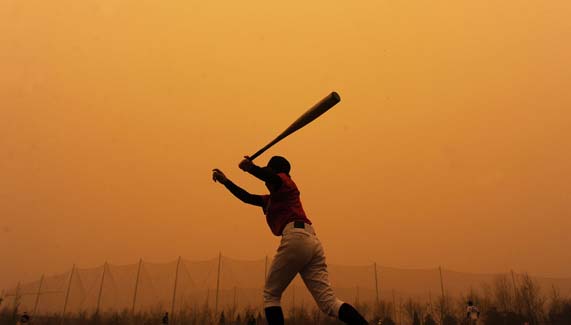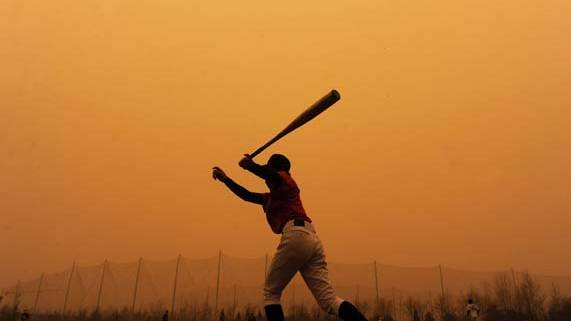Humans to blame for Sandstorms? China smothered in orange haze.
Source: dawn.com

Tons of sand turned Beijing’s sky orange as the strongest sandstorm this year hit northern China, a gritty reminder that the country’s expanding deserts have led to a sharp increase in the storms.
The sky glowed Saturday and a thin dusting of sand covered Beijing, causing workers and tourists to muffle their faces in vast Tiananmen Square. The city’s weather bureau gave air quality a rare hazardous ranking.
Air quality is ’’very bad for the health,’’ China’s national weather bureau warned. It said people should cover their mouths when outside and keep doors and windows closed.
China’s expanding deserts now cover one-third of the country because of overgrazing, deforestation, urban sprawl and drought. The shifting sands have led to a sharp increase in sandstorms - the grit from which can travel as far as the western United States.
The Chinese Academy of Sciences has estimated that the number of sandstorms has jumped six-fold in the past 50 years to two dozen a year.
The latest sandstorm also hit the regions of Xinjiang and Inner Mongolia and the provinces of Shanxi, Shaanxi and Hebei, affecting about 250 million people over an area of 312,000 square miles (810,000 square kilometers), the state-run Xinhua News Agency reported.
As the sandstorm moved southeast, South Korea’s national weather agency issued a yellow dust advisory for Seoul and other parts of the country.
Chun Youngsin, a researcher at the Korea Meteorological Administration, said the yellow dust was expected to hit the Korean peninsula beginning Saturday afternoon and it would be ’’the worst yellow dust’’ this year.
Some flights at Beijing’s international airport were delayed but eventually took off, said a woman answering phones at the airport hot line.
Skies cleared in the city by midday, but a warning of more dusty weather remained in place until early Sunday afternoon.
’’I think this kind of natural disaster is caused by human activity, but I don’t know the exact reason, and I don’t know exactly what we can do to prevent this,’’ said Beijing resident Shi Chunyan.
China has planted thousands of acres of vegetation in recent years to stop the spread of deserts in its north and west, but experts have said the work will take decades.
’’The challenges ahead are still huge,’’ China said in a report to the United Nations in 2006.
And the pressures of China’s development aren’t easing. ’’Arid and semiarid areas can only support one or two people per square kilometer. In China, population density in these areas is over 10 people per square kilometer,’’ Jiang Gaoming, a professor at the Chinese Academy of Sciences’ Institute of Botany, wrote for the online environmental magazine China Dialogue in 2007.
The residents once were nomads, ’’but now they have settled, increasing the pressure on the environment and inevitably damaging it.’’
The worst recent sandstorm to hit Beijing was in 2006, when about 300,000 tons of sand were dumped on the capital.
’’The situation improved tremendously after that. Thanks to the mild climate and conservation efforts, Beijing had only one sandstorm last year,’’ Guo Hu, head of the Beijing Meteorological Station, told Xinhua on Saturday.
The closest desert area to Beijing is about 500 miles away, in the region of Inner Mongolia, Guo said.
China’s dust storms were at their worst in the 1950s and ’60s after campaigns to raise farm and factory output following the 1949 communist revolution stripped the soil of vegetation.
Because of those campaigns, archaeologists have found that sandstorms are reducing some packed-earth sections of the Great Wall in western China to ’’mounds of dirt’’ that may disappear in 20 years.
Article from: Dawn.com






















